Judith Hoffmanâs Westwood penthouse: Antique elegance in modern world
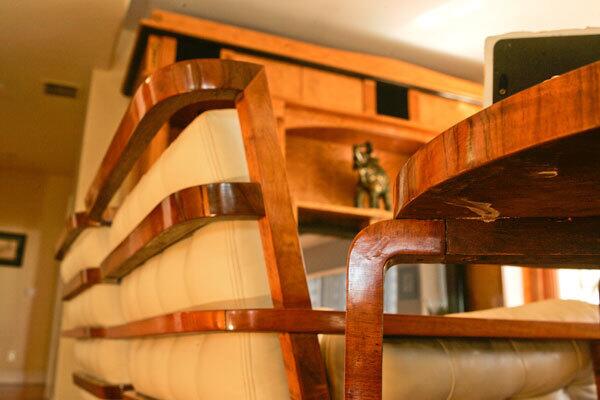
Built of glass and steel, the modern high-rises on Wilshire Boulevard in Westwood look like ideal homes for people who love minimalist interiors. Judith Hoffman isnât one of them. âCertainly there is a whole group of people today who feel the need to relive the clean reductive Bauhaus way,â she says, referring to the 1930s modernist aesthetic. âI believe in contemporary spaces, but I have discovered that less isnât more. Itâs just less.â Pictured here: detail of a 1920s birch chair by Lajos Kozma.
Read the full story on Judith Hoffmanâs Westwood penthouse here. (Mel Melcon / Los Angeles Times)
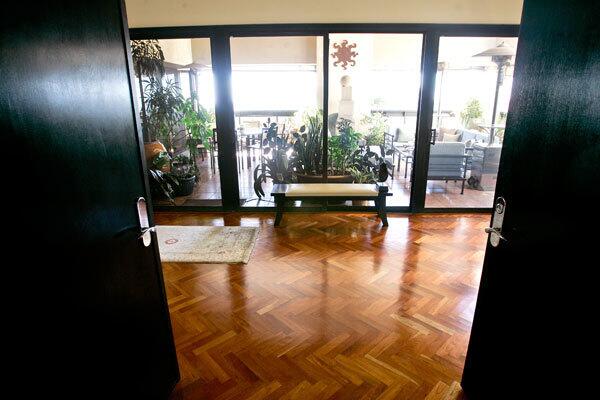
Open the door to Hoffmanâs 6,000-square-foot penthouse, and one will find a worldly, opulent blend of decorative periods and styles. The rooms are filled with artfully arranged furniture -- Art Deco, Vienna Secession, pieces inspired by 1940s French design and the early 19th century German neoclassical style known as Biedermeier.
âAntiques have to be combined with contemporary designs to make it feel like today,â Hoffman says. âIâm not crazy about doing purely period rooms because too many antiques becomes mundane.â Step inside ⦠(Mel Melcon / Los Angeles Times)
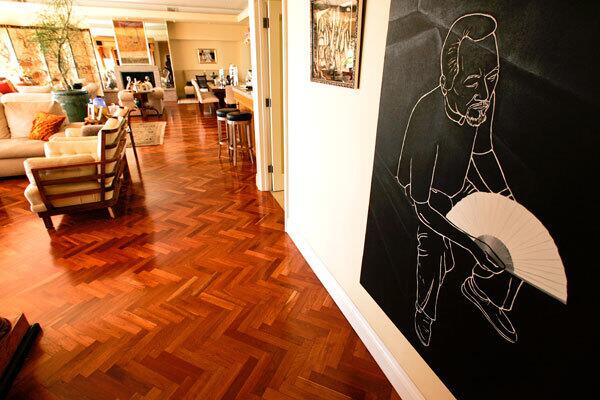
Hoffman was born in
She bought the Lajos Kozma chairs pictured at left on a trip to Budapest in the late 1990s. âI ran to the Museum of Applied Arts and discovered that he was the
The contemporary artwork in the foreground is by Hungarian painter Laszlo Feher. (Mel Melcon / Los Angeles Times)
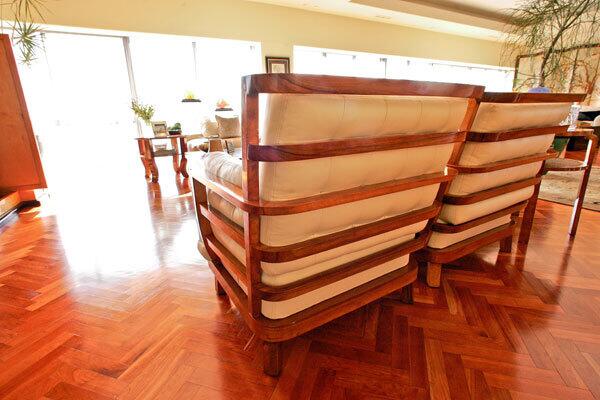
Two chairs by the Hungarian Kozma lie at the heart of the living room. In the design industry, French Art Deco has long been considered the gold standard, but Hoffman champions design from her native
Over the years, Hoffman has become a connoisseur and collector, finally amassing so much 20th century Hungarian and Austrian furniture and decorative objects that she opened the store Szalon in
Advertisement
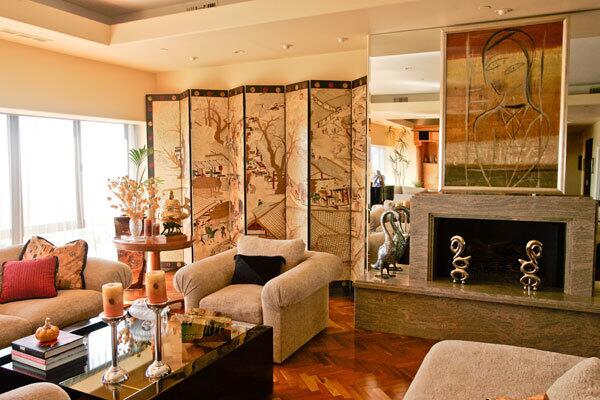
The living roomâs well-stuffed rolled-arm furniture is arranged hearthside; contemporary andirons and a metal goose purchased in Morocco complement the granite fireplace. The 10-foot-wide Chinese screen is 19th century.
In her native country, Hoffman says, each generation layered new purchases with family heirlooms. âThings could be 20, 50 or 100 years old, and all live very well together,â she says of the mix. This old-meets-new decorating philosophy is harder to achieve in an era of disposable home décor. âI want to be as up to date as everyone else,â Hoffman says, âbut I resent the pack mentality of it. I always admired things for their own beauty and not necessarily because everybody thought they were cool.â (Mel Melcon / Los Angeles Times)
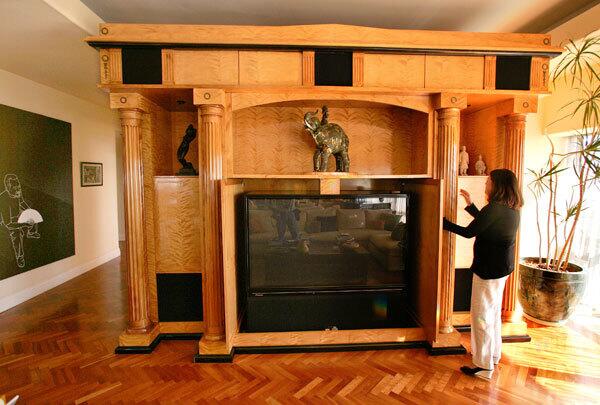
Hoffman designed a Biedermeier-influenced media unit with fluted columns that conceal pullout storage drawers fabricated by Vienna Woods in
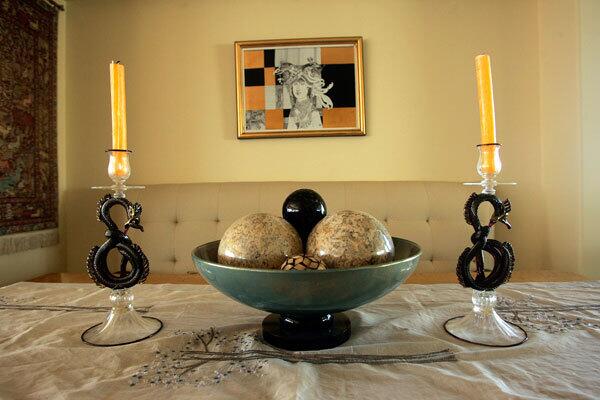
Paired with a settee from Thomas Lavin, this table is one of two used to entertain guests. Together they can accommodate 22 people. (Mel Melcon / Los Angeles Times)
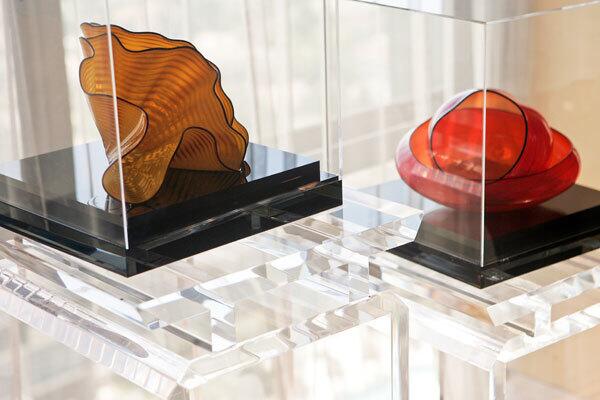
Showcased with all European antiques are contemporary glassworks by Dale Chihuly. (Mel Melcon / Los Angeles Times)
Advertisement
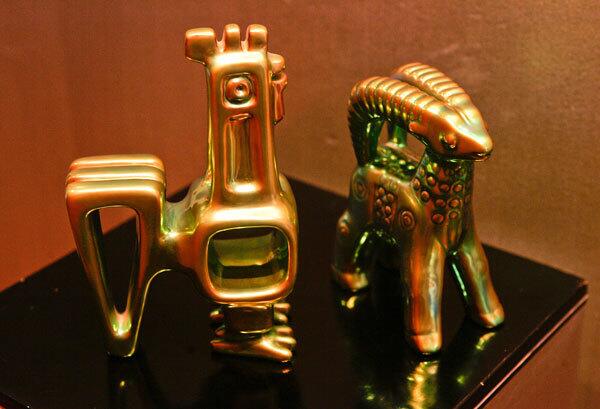
Two midcentury figurines are by the Hungarian porcelain firm Zsolnay, known for its iridescent and metallic glazes. (Mel Melcon / Los Angeles Times)
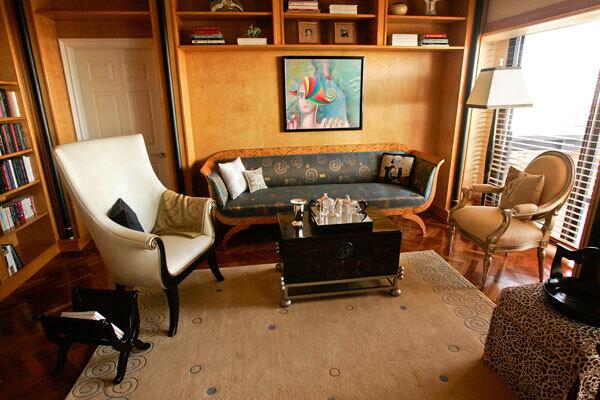
With its Louis XVI chair, the library is French neoclassical. The table is an old Chinese chest for which Hoffman designed a brushed stainless steel stand. The sofa is a Biedermeier reproduction by Vienna Woods. The lyre-shared tub chair is a Rose Tarlow piece. (Mel Melcon / Los Angeles Times)
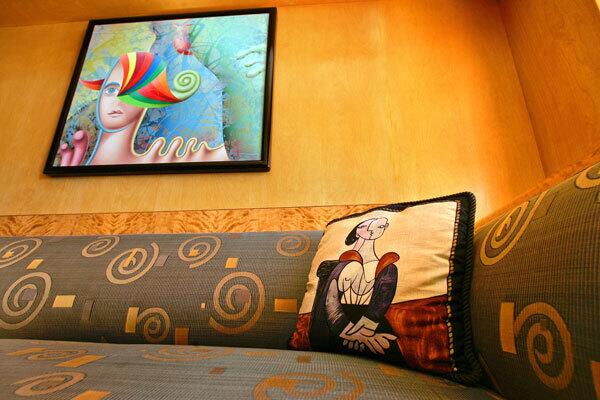
Above the library sofa: a contemporary painting by Yankel Ginzburg, an American of Russian descent. Hoffman says she chose the sofa fabric because it picks up on the swirls in the rug, referencing Vienna Secession design. (Mel Melcon / Los Angeles Times)
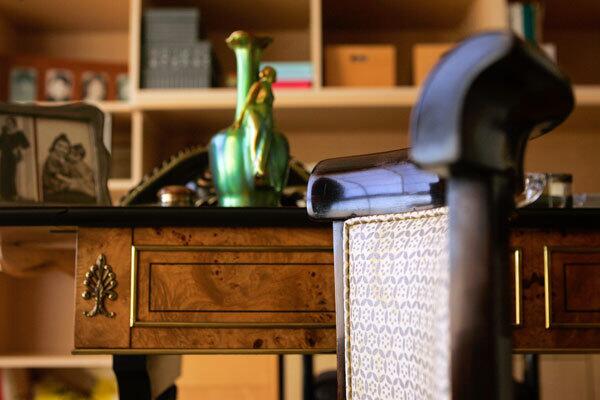
Hoffmanâs home office has a Russian Empire reproduction desk by Baker and a side chair by Austrian designer
Advertisement
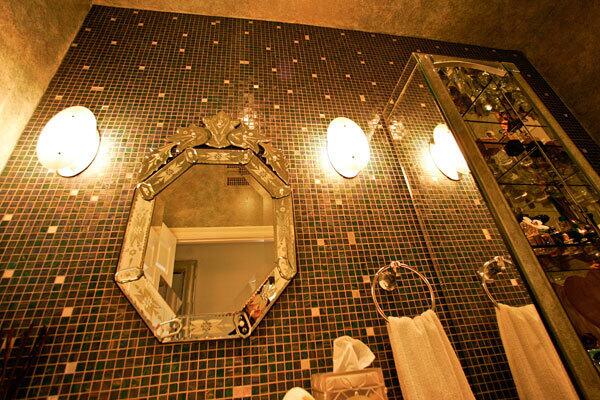
In the powder room, Judith Hoffman used glass and gold Italian mosaic tiles and a Venetian mirror to create a sense of Hollywood Regency grandeur. (Mel Melcon / Los Angeles Times)
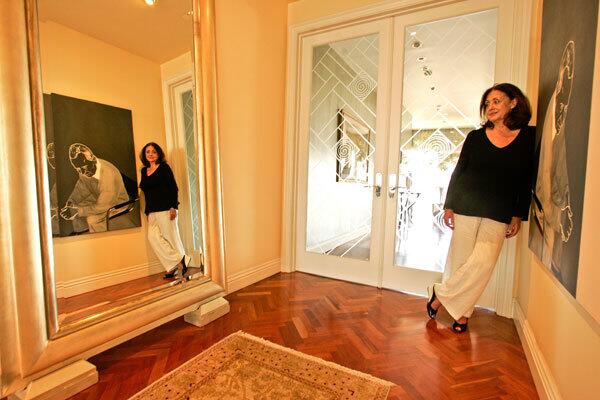
Hoffman stands in front of frosted-glass doors leading into the master suite. She devised a pattern for the glass similar to what might have been found on a
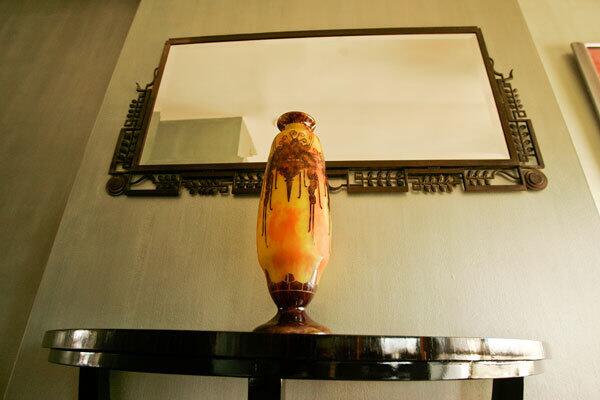
Inside the bedroom doors: a half-moon rosewood console table, a Charles Schneider French Art Deco vase and an Edgar Brandt framed mirror. (Mel Melcon / Los Angeles Times)
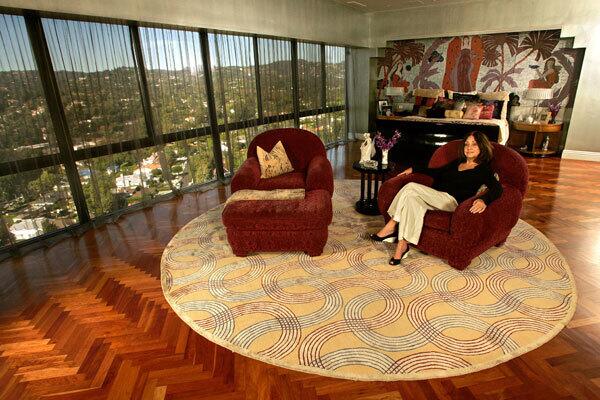
The expansive master bedroom exudes Art Deco glamour with silver painted walls, oversized chenille club chairs that Hoffman designed and an elaborate mural by the contemporary Russian artist Katya Kompaneyets. (Mel Melcon / Los Angeles Times)
Advertisement
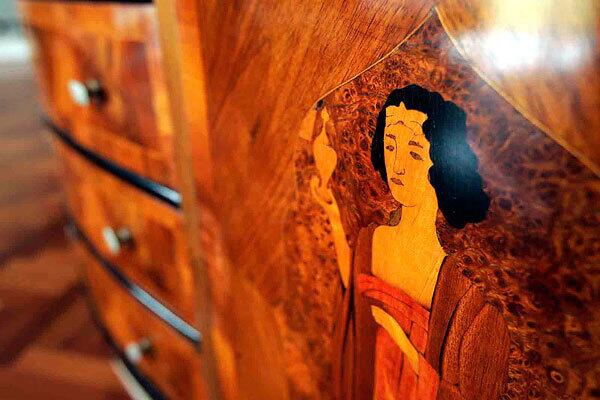
A bedroom cabinet includes a walnut chest of drawers with the kind of intricate marquetry typical of the 1920s. âIn order to bring the elegance and luxury of the past into today,â Hoffman says, âI needed a contemporary space that I could make my own.â
Read the full story on Judith Hoffmanâs Westwood penthouse here.
Click here for more Homes of the Times. (Mel Melcon / Los Angeles Times)



